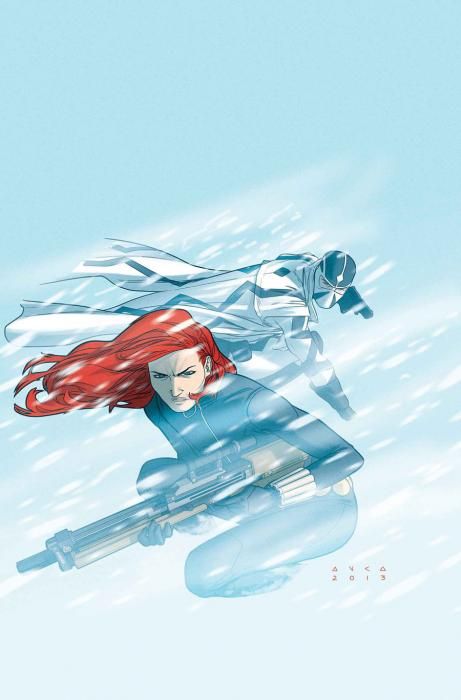As a series of completely disconnected one-shot stories, every issue of "A+X" has to work hard to stand out. They can't all succeed, but "A+X" #10 definitely does, featuring a story by B. Clay Moore with Kris Anka on art, and Adam Warren returning to the Marvel Universe. It's fair to say that this issue is going to look fantastic, even if the stories are paper-thin.
Paper-thin needn't be a bad thing, of course. Moore's story with Kris Anka is great fun as the Black Widow finds herself chasing the same artefact as the mutant thief Fantomex. The introduction of what appears to be a new Winter Guard team is possibly stretching the capacity of a 10-page story somewhat, particularly given that the best moments are those where the Widow and Fantomex interact, but at least Moore uses his story to add something to the Marvel Universe.
Anka's art on the short is fantastic. The artist knows how to compose a panel, with fluid movement and storytelling and a strong grasp of character design. It more than excuses the near-total lack of backgrounds, because who cares about background when the foreground is this beautiful?
The second piece in the comic is both written and drawn by Adam Warren, making this his first interior artwork for Marvel since 2007's "Iron Man: Hypervelocity." It's typically Warren-esque story, hyperactive but dense, light-hearted but with an underlying dark tone.
The story contrasts the Scarlet Witch's "bad luck" powers against Domino's "good luck" powers, although it plays fast and loose with the interpretation of both in interesting ways. There's a lot going on in these 10 pages, and Warren is one of the creators who seems better-able to adapt to such a small amount of space. It's a shame the coloring seems a little off-balance, particularly in attempting to imbue Warren's simple faces with far more three-dimensionality than they can necessarily support. At times it looks actively ugly, and it's hard not to think (given Warren's usual style) that this might have benefitted from being in black and white, if not shot from pencils entirely.
"A+X" issues tend to live or die on the desirability of their creators, and luckily this issue has at two artistic coups that make it worth the money. Fans of neither may feel a little underwhelmed, but this is exactly the sort of thing the book should do: give auteurs an outlet. This issue contains two better-than-average instalments, and that alone makes it worth sampling no matter the authors' level of recognition.

